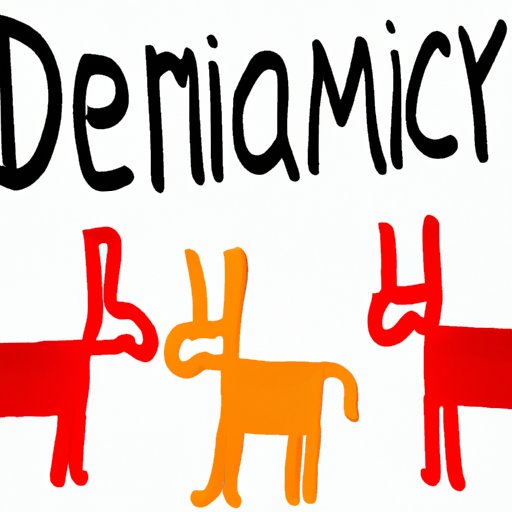Introduction
Politics can be a challenging subject to teach children, but it’s an important one. As they grow up and become active members of society, they will need an understanding of the political ideologies that shape our country. One of the biggest challenges that parents face is explaining the differences between Democrat and Republican to their children. In this guide, we’ll explore how to break down these complex political beliefs into digestible pieces for kids.
Challenges of Explaining Democrat vs Republican to Kids
Explaining political beliefs to children can be a daunting task for parents. Political beliefs are often shaped by personal experiences and worldviews, and it can be easy to unintentionally introduce bias into the conversation. Parents may also worry about overwhelming their children with complex concepts they may be too young to understand.
It’s important to remember that a child’s understanding of politics will evolve over time. They won’t learn everything overnight, and it’s okay to start with the basics. As you teach your child about politics, it’s important to regularly check in with them about their understanding and identify any misconceptions they may have.
Understanding the Basics of Democrat vs Republican
At their core, the Democratic and Republican parties are based on different beliefs and values. Democrats generally believe in a larger government with a focus on social justice and equality. Republicans, on the other hand, believe in smaller government with a focus on individual freedoms and personal responsibility.
Democrats
Democrats generally believe that government should play a larger role in providing social services, such as healthcare and education. They value diversity and believe that everyone should have the same opportunities to succeed. Democrats tend to support progressive taxation, which means that people who earn more money pay a higher percentage of their income in taxes. They also prioritize environmental protection and climate change mitigation.
Republicans
Republicans believe in individual freedoms and less government intervention. They prioritize personal responsibility and believe that individuals should take care of themselves and their families. Republicans tend to be in favor of a flat tax rate, where everyone pays the same percentage of their income in taxes, regardless of income level. They also prioritize defense and national security.
How to Talk to Kids About Democrat vs Republican
When explaining political beliefs to children, it’s important to keep the conversation age-appropriate. Start with general concepts and avoid getting too deep into the weeds of complex political issues. You can also use real-life examples to help your child understand the concepts better.
Make the conversation interactive by asking your child questions and encouraging them to share their thoughts and opinions. This can help them engage with the material and develop a deeper understanding.
For Younger Children
For younger children, you may want to start by explaining the basics of democracy and the two-party system. Talk about how we elect leaders and let your child know that people can have different opinions about how to run the country. Use simple examples like choosing between different types of pizza toppings to help them understand the concept.
For Older Children
Older children may be ready to delve deeper into political beliefs and the differences between the two parties. Explain the different values of each party and how they impact policymaking. Encourage your child to seek out information from a variety of sources to better understand the complexities of political issues.
Teaching Kids to Stay Objective
It’s important to teach children to form their own political beliefs instead of simply adopting the beliefs of their parents or peers. Encourage your child to ask questions, think critically, and seek out different perspectives on political issues. Help them understand the importance of staying objective and avoiding bias in political conversations.
Encourage Research
Encourage your child to research different political issues and think critically about the information they find. Help them identify different sources of information, including news outlets, websites, and books.
Encourage Discussion
Encourage your child to have open, honest conversations about politics with friends and family members. Encourage them to listen to other people’s opinions and seek out different perspectives.
Answering Common Questions
Children may have a lot of questions about politics and the differences between the two parties. Here are some common questions that children may ask and examples of how to answer them.
Why are there different political parties?
People have different opinions about how the country should be run, and political parties are a way for people with similar beliefs to work together to make changes.
What is a Democrat?
A Democrat is a person who believes in a larger government that provides social services, such as healthcare and education. They value diversity and believe that everyone should have the same opportunities to succeed.
What is a Republican?
A Republican is a person who believes in small government and personal responsibility. They believe that individuals should take care of themselves and their families and prioritize individual freedoms.
Conclusion
Explaining Democrat vs Republican to kids can be a difficult task, but it’s an important one. It’s important to start with the basics and provide age-appropriate explanations. Encourage children to ask questions, think critically, and seek out different perspectives. By having open, honest conversations with your child about politics, you can help them become informed citizens and active members of society.
